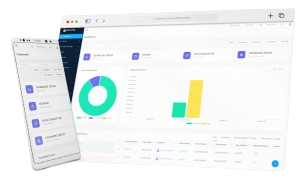“Train your employees on a new POS system” effectively, and your business will reap the rewards of smoother operations, faster transactions, and happier customers. Proper employee training is essential for a seamless transition, whether upgrading to a more robust system or switching to a new platform. This guide will provide proven tips to ensure your staff is confident and ready to use the new POS system, minimizing errors, maximizing efficiency from day one, and preventing overstocking and stockouts.
By investing time into thorough POS training, you set your team and your business up for long-term success.
1. Begin with Hands-On Training
When training employees on a new POS system, nothing beats hands-on experience. While video tutorials and documentation are helpful, employees learn best by doing. Set up the POS exactly as it will function in-store, ensuring that all hardware is connected and each employee has their user account with the appropriate roles and permissions.
Encourage staff to complete real tasks like processing sales, handling refunds, and troubleshooting common issues like card declines. This approach not only gives employees immediate feedback but also boosts their confidence in handling the system during live customer interactions.
For mobile POS systems, let employees practice as they would on the sales floor. Hands-on training ensures they become familiar with the actual flow of transactions, helping them develop the muscle memory needed to complete tasks efficiently once the system is live.
2. Leverage Historical Data to Build Confidence
Employees may feel uneasy when switching to a new POS system, particularly if they’re concerned about losing access to important historical data like sales records or customer profiles. To ease these concerns, reassure your staff that all vital data will be transferred seamlessly into the new system. Show them exactly where they can access this information within the new POS.
Providing access to historical data during training helps employees feel more confident in serving customers, as they’ll be familiar with where to find key details like past purchases or customer preferences. This knowledge is crucial for making personalized recommendations and ensuring a smooth transition for both staff and customers.
Take the time to explain any differences in how reports or data are displayed in the new system, and offer guidance on how to customize these reports to meet their needs. By involving historical data in training, you empower your team to feel in control from day one.
3. Simulate Real Transactions in Low-Stress Environments
Training employees to navigate a new POS system effectively requires practice in real-world scenarios. Simulating real transactions during quieter periods allows employees to learn without the pressure of a busy store environment. Schedule training sessions when foot traffic is low, such as early mornings or after peak hours, so your staff can focus on mastering the system without rushing.
Encourage employees to complete actual transactions, from processing different payment methods to handling returns or refunds. This real-world practice helps staff get comfortable with potential issues like declined cards or system prompts, ensuring they’re prepared for any situation when dealing with real customers.
Simulating transactions during low-stress times not only builds your team’s confidence but also reduces the risk of mistakes when the system is live. These practice sessions give employees a safe space to learn, ask questions, and troubleshoot before facing the pressures of a fully operational store.
Ready to simplify your operations and empower your team? Discover how Arm POS can transform your business with its user-friendly interface, robust inventory management, and seamless HRM features. Whether you’re upgrading your system or starting fresh, Arm POS makes it easy for your staff to get up to speed quickly and efficiently.
Don’t just take our word for it—experience the difference for yourself. Schedule a free Trial today and see how Arm POS can streamline your business, boost productivity, and enhance customer satisfaction. Your next step toward a more efficient future starts here.
4. Provide Ample Time for Employees to Acclimate
Switching to a new POS system can be challenging, and rushing the training process only increases the likelihood of mistakes. Give your employees enough time to get comfortable with the system before it goes live. The more time they have to practice, the more confident they’ll be when handling real transactions.
Focus on routine tasks, like processing sales, adjusting inventory, and navigating customer profiles, until these actions become second nature. This helps your staff develop the “muscle memory” needed for faster, smoother transactions under pressure.
Everyone learns at a different pace, so tailor your training to individual needs. Some employees might need extra time or one-on-one guidance to feel confident, while others may pick it up more quickly. Investing in sufficient training time upfront ensures fewer errors, shorter transaction times, and more satisfied customers in the long run.
5. Encourage Feedback and Continuous Learning
Once your employees have had time to use the new POS system, gather their feedback to identify any issues and areas for improvement. Encourage staff to share their experiences, whether it’s about specific features they find challenging or suggestions for streamlining processes. Asking open-ended questions, such as “What part of the system do you find most difficult?” can lead to valuable insights.
Feedback not only helps you fine-tune the system setup but also makes employees feel involved in the process, boosting their engagement and satisfaction. Regularly check in with your team to ensure they’re comfortable and continuously improving their skills.
Ongoing learning should be part of your strategy. As your business evolves and new POS features are introduced, consider periodic refresher training to keep your staff updated and confident in using the system. This fosters a culture of growth and adaptability within your team.
Conclusion
Training your employees on a new POS system doesn’t have to be overwhelming. By focusing on hands-on learning, providing access to historical data, simulating real transactions, allowing ample time to acclimate, and encouraging continuous feedback, you’ll ensure a smooth transition for your team. This investment in training will pay off with faster transactions, fewer errors, and better customer service.
Remember, the goal is to build your employees’ confidence and efficiency, so they can deliver an excellent in-store experience. Taking the time to thoroughly train them now will save you time, money, and frustration in the long run.
For businesses looking for an intuitive and powerful solution, consider Arm POS—an all-in-one system that simplifies the training process and provides the tools your business needs to thrive.






